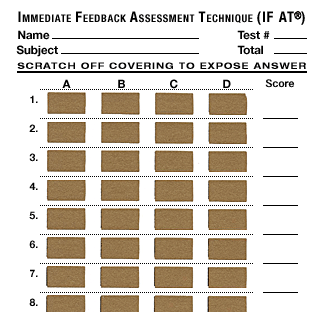Introduction to Team-Based Learning
What is team-based learning?
Team-based learning is a teaching method that allows one instructor to engage a large group of students through active learning and application of knowledge. Team-based learning employs a flipped curriculum that delivers content to students before class, freeing in-class time for problem-solving, critical thinking and discussion of content. Team-based learning divides a large group of students into smaller teams to facilitate student participation, promote discussion and collaboration.
Structure of a team-based learning session
A team-based learning session comprises three components: pre-session content, readiness assessment and application questions.
Component 1: Pre-session Content
Here students learn the content and skills which they will use to answer questions and solve problems during the in-class session. The material for this component can be delivered in a variety of formats, including video, readings, website or online slideshow. Students should complete this section before coming to class.
Component 2: Readiness Assessment
Here students take a short, multiple-choice quiz to assess their understanding of the pre-session content. Students first complete the quiz as individuals relying only on their recall of the pre-session content. This section is called individual readiness assessment or IRAT. After students have completed the quiz, they answer the same questions in their team. Students discuss each question with their teammates and decide on which answer to the question they think is correct. Teams receive feedback on their selection thought scratch-off cards which reveal the correct answer to each question. This section is called group readiness assessment or GRAT.
After teams have finished the quiz, the instructor holds a discussion of the questions to clear up misunderstandings or confusion about the content covered in the quiz.

Component 3: Application Questions
The application questions require students to apply what they learned in the pre-session material to solve a real-world problem. Students will work on and discuss these problems in their teams and the teams should come to a consensus answer. Application questions should be significantly more challenging than the questions on the readiness assessment quiz.
Besides being more challenging than the questions on the readiness assessment quiz, the application questions should also present a real-world problem to the teams. The questions should put the students in situations that they might encounter in their future careers (e.g. physician, scientist, etc.). In addition, as in the real world, students should have to come to a final decision when answering the application questions.
The teams show their commitment to an answer by holding up a card that displays their choice. After all teams have committed to an answer, the facilitator leads a discussion of the question and the choices. Teams are given the opportunity to explain their rationale for selecting a particular response and present arguments why their selection is the best choice. The discussion is also a time when the facilitator can clear up any misunderstanding of the material and its applications and/or provide additional examples of how the material can be applied.